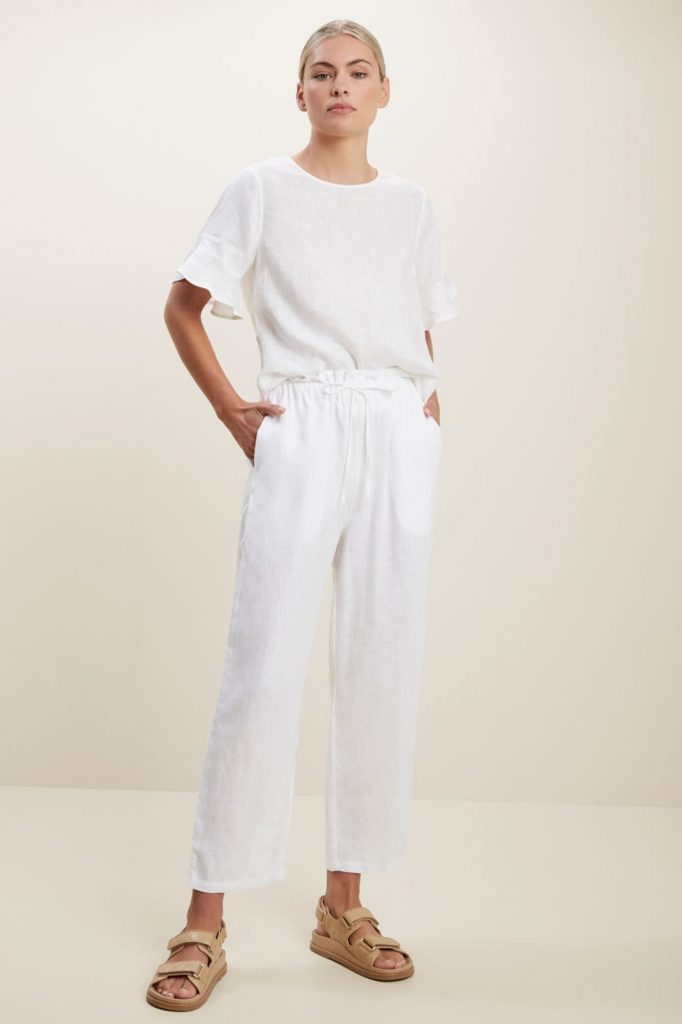Words By : Zu Anjalika Kamis Gunnulfsen
~ Fashion can be a universal player in protecting the planet ~ Pharrell Williams
WHAT IS MINDFUL FASHION? Mindful fashion is all about producing the world’s current needs while making sure the way it is done has the earth’s future interest in mind as well. If we are to go deeper, sustainable fashion is also about ensuring all those people involved through the fashion supply chain benefit in the process, too. This means right from the start; farmers, designers, factory workers, consumers and also those working in the end-of-life facilities such as recycling centres or factories.
It is a movement and process of fostering change to fashion products and the fashion system towards greater ecological integrity and social justice. This means dealing with interdependent social, cultural, ecological, and financial systems.
We will not see the word fashion in the same sentence as social justice and integrity just couple of years ago. These days, however, those words are repeated over and over by designers, editors, consumers and even fashion conscious invidivuals. Sustainable fashion has been on everyone’s lips for the last decade, although the movement has been around, albeit on a smaller scale, since the 1960s.
In 2013, Rana Plaza Garment Factory in Bangladesh collapsed, killing 1,134 people. This tragedy piqued interest in the fashion world – condition and predicament of garment factory workers around the world come into the light.
Rana Plaza was a building that housed several clothing factories, despite the fact that it was not meant for factory set-up. The building’s architect mentioned that the building was designed for shops and could not handle the weight and vibrations of factory machinery. Primark, Zara, Mango, Benetton and Accessorize were some of the brands that have their factories in Rana Plaza.
Further investigations revealed that the workers at Rana Plaza Garment Factory were not fairly paid, worked in bad conditions and it was also revealed, prior to collapsing, the owners had been warned of the deteriorating building; cracks were seen. However, due to the no-production-no-revenue situation, workers were forced to continue working; with threats of withholding their salary. The Rana Garment Factory is just one of the many that exist, just to feed the world’s demand for high street fashion.
Fashion itself has such a significant impact in our future. Take climate change for example and if we’re going to tackle the real threat of it, the fashion industry needs to urgently address its unsustainable practices. The fashion industry is one of the biggest polluting on earth with 100 billion products being manufactured out of factories every year.
Consumers are at liberty to buy and dispose of clothes even more prevalently now than it had ever been. It is not surprising waste is one of the most, if not the most pressing problem in the fashion industry. Fashion wastes are burned or sent to landfills – totally polluting, unsustainable and inefficient. While some brands have announced their target of becoming 100 per cent zero-waste in the next decade, the question still lingers whether or not it is possible to be circular by then.
Let us look into water consumption in the fashion industry. Cotton, in particular, requires a huge amount of water; it takes almost 3000 gallons of water just to produce one cotton t-shirt. What about viscose, which is causing deforestation and affecting endangered species and trees while polyester is made from non-renewable resources like oil?
How long can we keep on using these resources before we have none left?
Something needs to change.
Unsustainable resources and wastes, be it for fashion or not, is our responsibility together and it needs to be addressed immediately.
Mindful or sustainable fashion has started to be on roundtable discussions in many nations, with ideas and innovations being developed as we speak. However, the question still remains whether or not regulation and legislation will be introduced. Fashion is a multi-billion dollar industry . We will need more companies to come forward and address this pressing issue collectively. More awareness campaigns need to be done. Brands need to involve consumers; bring them together in a new era of a more elevated and conscious consumption. Fashion can be seen as something that is facetious or superficial but it is one of the major economic players, which impact the world and environment in a huge way.
It is therefore important to understand the industry and how it has changed over the years in order to be in line with what is ethical or otherwise.
Gents’ Dress Down Fridays
Gentlemen, dressing-up for dress-down Fridays is more than just tee and jeans combination. Let’s get a little bit creative, shall we? Here’s a little take on feeling good and looking fine on a casual work day.
I love the classic look of a roll neck jumper and trousers. Do opt for good quality, no patterned (rolled neck) jumpers; stick with neutral colors. Team it up with cotton trousers and loafers.
A well fitted white t-shirt and blazer combo is always a winner. Make sure the blazer is of good quality; 100% cotton material for that polished look. You may for opt for undistressed, unripped, clean, darker-colored jeans or cotton trousers and loafers..
Suits and trainers would not have worked some years back. However, that changed when Silicon-Valley relaxed chic made its appearance. This is easy to wear and just (oh) so stylish. That said, taking one of the smartest pieces in menswear and pairing it with the most casual can be a tad tricky. Done correctly, it can make you look sleek, without trying too hard. The most important thing to note is to make sure your trainers are white and clean at all time, if this look is what you are after.
Jumper / Sweatshirt and Shirt – Jumper with a crisp dress or oxford shirt always nail the smart casual style. Choose a comfortable casual trousers and a pair of loafers to complete the look.
ROARING WITH LEOPARD PRINT
The print that almost always receive bad rap and associated with dubious characters is making its comeback and should be embraced; just like Jacqueline Kennedy did in 1962, when she stepped out – hair all coifed, make-up flawlessly applied, elegant in her leopard print.
However, I say it now and will say it over and over, whichever animal print you wish to wear, make it a faux one, please. No animals should be harmed for our vanity. That said, lets look at ways to wear leopard print without looking tacky, trashy, tarty or perhaps even all the three..
Leopard print maxi dress teamed up with a simple clean, button up jacket is a go to look. I’ll then throw in a pair of strappy heels and finish off the look with a clutch..
If you just wish to experiment with teeny bit of the print, go for leopard (print) handbag, drawstring purse or clutch – it automatically fizzes up a simple outfit.
I am so crazy about the leopard print long-line trenches. I’ll usually have on a simple black or white dress and just nonchalantly hang a leopard trench on the shoulders. This always receive second looks and compliments; so simple yet stylish not mention classy; quite a contradiction for leopard print’s reputation.
With any animal print, the cleavage-or-leg-rule applies. Decide which one you want to bare; just not both..
Leopard print shirt in soft, flowy fabric, jeans and heels; need I say more!
Either one of the above you choose, have fun with the piece. All it takes is a little spring in your steps and lots of attitude; that will definitely seal the look!










